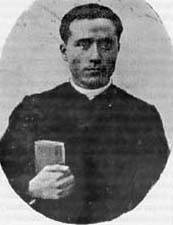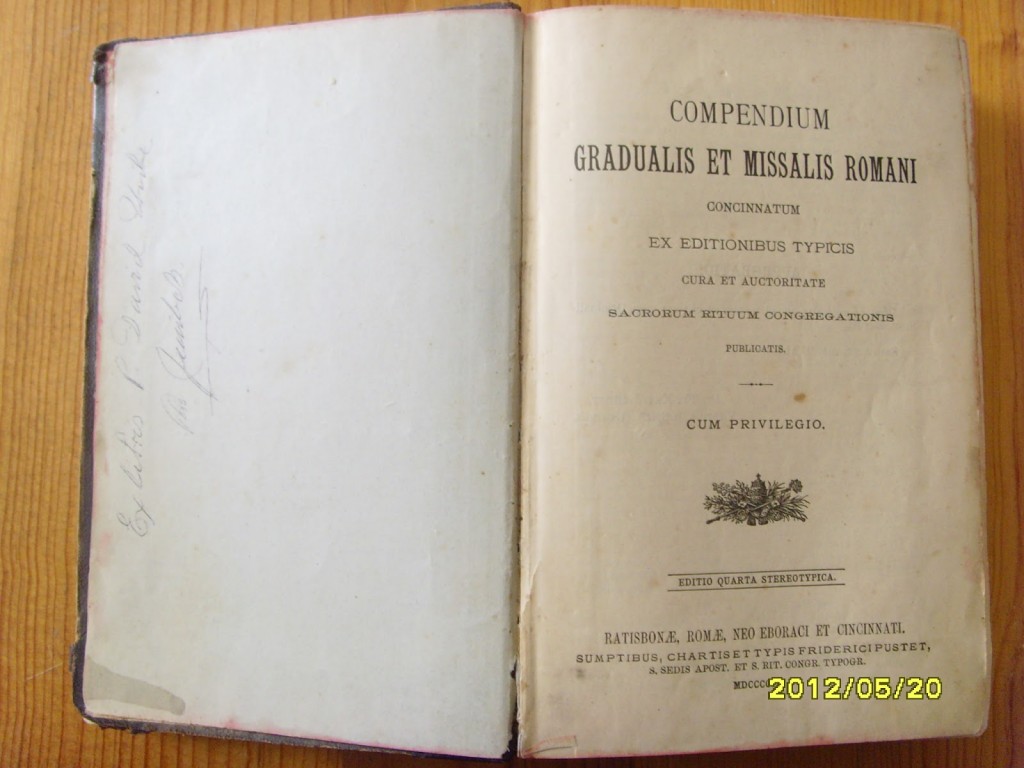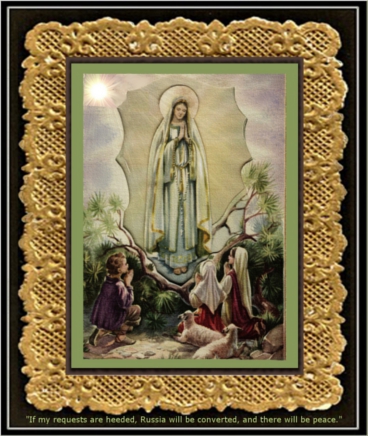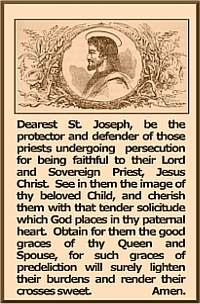In view of the verbosity of commentary all over the internet regarding the SSPX-Rome negotiations, I have highlighted what I consider of importance. This is an excellent interview, one which I hope will restore peace to those troubled souls who have a tendency to see matters in their purely political aspect. As Father says, “..it is the Barque of Peter, and Our Lord governs Her.”
This from the Remnant publication:
An Interview of Father Arnaud Rostand
(District Superior of the Society of St. Pius X in the United States)
Thank you for taking time to speak to us about the Vatican/SSPX negotiations, which no doubt will have truly historic ramifications for the Church and indeed the entire world, and are thus of paramount interest to the readers of The Remnant.
Before we get started, I would like to note that though I was confirmed by Archbishop Lefebvre and hold his memory in the highest regard, it is nevertheless no secret that The Remnant has also supported the Fraternity of St. Peter, the Institute of Christ the King and the other Ecclesia Dei communities, believing that in God’s providence a two-front offensive was needed in the war to preserve Catholic Tradition. We’ve not deceived ourselves, however—were it not for the Archbishop and the SSPX, the traditional Catholic movement would likely still be in the basement chapels and hotel conference rooms I remember as a child. So, even those of us who are not formal adherents to the SSPX certainly recognize its pivotal role in both the counterrevolution as well as the genuine Catholic restoration. I’m thus grateful for this opportunity to ask you for a few clarifications that I hope might dispel some rumors while alleviating a few of the concerns Catholics on all sides of this issue have shared with us over the past few weeks.
Michael J. Matt (MJM): First of all, can you give our readers an update on where the negotiations between the Society of St. Pius X and the Vatican stand at this moment?
Father Rostand (FR): We are today in a waiting phase. During the two past years doctrinal discussions took place between the experts of the Congregation for the Doctrine of the Faith and those of the Society of Saint Pius X. Even though the discussions remained private, it is not a secret that the two positions were not reconciled. There is still disagreement on doctrinal matters, however, it is clear that the Congregation for the Doctrine of the Faith did not find any of our positions to be non-Catholic. Despite this disagreement, it appears that the Holy Father is willing to grant a canonical statute to the Society. A few weeks ago His Excellency Bishop Fellay sent a doctrinal declaration to Rome. We are now waiting for the answer from Rome.
MJM: What exactly would it mean if the Society were to be granted a personal prelature?
FR: The Society of Saint Pius X was erected in 1970. Her statutes were approved by the local bishop and even praised by Cardinal Wright in 1971. Then came the two condemnations in 1976 and 1988. For canonical discrepancies and for doctrinal reasons we have always maintained that the suppression of the Society was not valid and that the Society is still a branch of the Catholic Church. In that regard, a personal prelature will not be for us a birth as a new family in the Church but will give us more visibility. In other words, in the essence of things it will not change a lot but in appearances it will.
A personal prelature is an institution headed by a prelate. A prelature is like a diocese, except without territorial boundaries. The jurisdiction of the Superior is over persons, clergy, religious and lay people, wherever they are. It therefore seems to be a possibility for the Society that would allow us to remain as we are and continue to grow.
MJM: And would the religious houses now affiliated with the SSPX—the Benedictines, the Dominicans, etc.—also be included under the umbrella of this personal prelature?
FR: I do not wish to go into the details of the prelature, as we do not have all of the facts yet. Many people are making all sorts of comments but the reality is that the details of such a possibility are not yet released. We will have to exercise the virtue of patience and wait.
However, on the specific point you ask, there should be not difficulties for the other religious communities affiliated with the Society to be included under this umbrella. I know this question is one of the concerns of Bishop Fellay.
MJM: Since the conditions for the establishment of such a personal prelature have not yet been agreed upon, isn’t it fair to say that negotiations are still ongoing and that even still this is hardly a “done deal”?
FR: The history of the Society is a reminder of how prudent and patient we must be. Everyone remembers what happened in 1987-1988, with the visit of Cardinal Gagnon. As an anecdote, I made my first engagement to the Society of Saint Pius X on December 8, 1987, in the hands of Archbishop Lefebvre, with Cardinal Gagnon assisting at the ceremony from the throne. Then came the doctrinal declaration of the protocol of May 5, 1988, it was a done deal! Archbishop Marcel Lefebvre retracted his signature the next day because Rome would not give a specific date for the episcopal consecrations.
In principle Archbishop Lefebvre was not opposed to a practical agreement, but it had to be “practical.” Today, like in 1988, we need some real practical conditions that will make the work of Tradition possible.
MJM: What, then, accounts for the high expectations that there will be an announced agreement forthcoming as soon as Pentecost?
FR: Let us not jump to conclusions too soon. There are reasons to think that the Holy Father wants to conclude the matter soon. However, only facts will answer this question: wait and see.
MJM: One of the Internet rumors has it “on good authority” that this “deal” between the SSPX and the Vatican was in fact completed many months ago and that Bishop Fellay’s team has only been working to prepare the adherents of the SSPX for an announcement that’s been inevitable all along. Can you comment on this?
FR: This is pure imagination and I can certify that it is not true.
MJM: Does Bishop Fellay have an inkling of the thinking of the Holy Father himself on all this? Has he had any direct contact with Pope Benedict, or is everything being relayed through Cardinal Levada?
FR: The normal way of communication with Rome is through the different Congregations. As far as I know most of the official communications are made through the Congregation for the Doctrine of the Faith but it is not the only contact the Society has with Rome.
MJM: Ever since his election, Pope Benedict has made no secret of the high priority he personally places on healing the SSPX “schism”. What seem to remain uncertain, however, are his motives. Is it possible to ascertain the difference between the Holy Father’s genuine desires to heal this rift for political reasons vs. an actual papal recognition (no matter how limited) of the legitimacy of the doctrinal objections raised by the SSPX?
FR: The reason why the Pope wants to resolve this situation is difficult to know. On the one hand, there seems to be a desire on his part to avoid a so-called “schism.” On the other hand, he is aware of the dramatic situation of the Church, which readers of your newspaper know all to well: open heresies professed by churchmen, sometimes touching the divinity of our Lord Himself, not to mention open rebellion, loss of faith, and disciplinary problems, whether in Austria, America, or Ireland… The Holy Father, I think, sees that the SSPX could be of some assistance in helping fight these real and all-too-prevalent problems.
Further, however, there is a mystery which I think is linked to the mystery of the Church which is at the same time human—that is made of men with their weaknesses and sins—but also divine that is to say that Our Lord Jesus Christ still leads and works actively through and with men.
There are obviously human reasons for what is happening today in the Church and it is important to try to understand what the “political” reasons are for the different moves. A supernatural view of things however, is much more enlightening.
MJM: Given this crisis of belief in the Church throughout the world, then, is it possible that the Holy Father may even recognize the potential benefit of 500-plus orthodox priests of the Society helping him regain some control of the post-conciliar apostasy?
FR: You give here a good example of the mystery we are confronted with.
MJM: Can you say something about the letters between the four bishops of the SSPX that were recently leaked to the press?
FR: As I said in my recent letter: “First of all, I want to denounce the immorality, as well as the revolutionary nature, of publishing such private documents. If it can be grave matter to read private letters, as moral theology teaches, it is even more serious to publish or distribute them without the permission of the authors. Furthermore, it is subversive to publish private discussions between superiors because it puts undue pressure on them. A superior must be able to make a decision in view of the common good and not because of any pressures (…)
Some people jump immediately to the conclusion that there is already a “split” within the Society. Even though unfortunately a split is always conceivable, we must work to avoid it as much as possible. This exchange of opinions is one of the ways to clarify the situation and help everyone in these difficult times. Some are using these letters to exacerbate the situation; it is not my way of dealing with the matter. I, on the contrary, try to communicate with many superiors and priests of the Society and strive to resolve the possible misunderstandings.
MJM: In your opinion, if the conditions for the personal prelature do, in fact, meet with Bishop Fellay’s approval, might he proceed even without a consensus among all four bishops?
FR: I think it’s important to emphasize a couple of points here. First, as I stated before, these letters are a normal and healthy way for members of the Society to express their opinions to the Superior General. They do not, in themselves, point to any indication of a “schism” within the Society. In reality, the fact that they were expressed to Bishop Fellay shows that the other three bishops recognize that the ultimate guidance of the Society lies with the Superior General. The second point to make is that it is clear from the direction of Archbishop Lefebvre that it is the duty of the Superior General alone to make decisions of this kind.
MJM: In light of the discord that was revealed in those letters many concerned Catholics are begging Bishop Fellay not to proceed without the support of a majority of the SSPX bishops. They argue, even as I do, that although the canonical standing of the SSPX must eventually be regularized, this is of far less import at this critical moment than maintaining unity among the strongest voice of loyal opposition in the Church today—the SSPX. Might the Vatican itself not recognize the prudential requirement for a postponement of an agreement in order to allow more time for Bishop Fellay and his brother bishops to stave off a massive split in the Society?
FR: I think, again, there is a presumption, heightened by internet rumors, that a split has already occurred in the Society which will tear it to pieces were we to conclude a practical agreement with Rome. It will only be with time that we see if and how broad a split may be, but I believe it is not nearly as grave as it has been made out to be. If anything, I am thankful for the admirable unity shown by the members of the Society in the U.S. District.
As to the question of the Vatican’s willingness to postpone things, this is obviously a question for the Holy See. For us, the path laid out by our venerable founder is clear: He has always expressed a desire to subordinate ourselves to the Pope, granting protection for the growth of Tradition, the existence of the Society, and guarantees that we will not be asked to minimize the fight, nor to compromise on the Faith. As he said in 1987: “If Rome really wants to give us true autonomy, like we have now but with our submission—we would like to be submitted to the Holy Father, and we have always wished for it…if Rome agrees to let us try this experiment of Tradition, there will no longer be any problem.” (Fideliter no. 60, Nov./Dec. 1987)
MJM: According to the terms of an agreement the SSPX will be guaranteed the right to continue its longstanding and constructive critique of Vatican II and the New Mass. But haven’t we heard this before? Isn’t it true that in every case where this same allowance was granted to other traditionalist fraternities that critique failed to materialize, with many good priests even being induced to concelebrate the New Mass, endorse controversial events such as World Youth Day, and lay aside any meaningful resistance to the revolution unleashed by the Second Vatican Council?
FR: There are a number of things that make the circumstances of today different from previous times. For one, Bishop Fellay insisted upon doctrinal discussions with Rome, and requested as preconditions for this, two signs of goodwill: first, freedom for the traditional Mass, and second, the lifting of the alleged excommunications. Both of these have been accomplished.
Further, we must not ignore the differences between the Ecclesia Dei communities and us: they have neither autonomy nor bishops.
Further, regarding Vatican II, other writers outside the Society, such as Msgr. Gherardini, can now openly critique the Council as well. Of course, we do not pretend there would be no pressure in the event of regularization, but we must keep in mind that this pressure comes only from certain sources, not all.
MJM: But the Vatican seems adamant that the SSPX must, to paraphrase the late Abbe de Nantes, swallow the Council in order to be regularized. Is this a fair assessment? And, if it is, isn’t it at least theoretically possible that some inside the Vatican may be seeking to neutralize the most significant opposition to that Council left in the world today—first through excommunication and then through regularization?
FR: Never as today has the position of the Society been so clearly exposed and documented in Rome, thanks to the discussions of recent years. As I already said, these discussions have already helped others from outside the Society to bring the same criticism.
In these peculiar and unprecedented circumstances, is it unrealistic to think that the recognition of the Society will amplify this already initiated movement?
Our hope is that this movement will be spread and the solution of Tradition acknowledged and applied. It has to be noted here that the Society’s preoccupation is not its own good but the good of the whole Church.
Further, it is important to understand that Catholic authorities throughout the world have never been as divided as today. Some will certainly try to neutralize that opposition since it is clear that not everyone sees the recognition in a good light. But here and there, some might also be inclined to try the path of Tradition if tolerated by the Pope.
MJM: Yes, but some would point out that the Priestly Fraternity of St. Peter, for example, still waits to be given its own bishop; the Transalpine Redemptorists have not yet been allowed to ordain their seminarians because permission to do so has been inexplicably withheld; Bishop Rifan of Campos, Brazil has been highly critical of traditionalist resistance to Vatican II and has himself concelebrated high-profile Novus Ordo Masses; and although the Society of the Good Shepherd was also assured that it would be allowed to raise objections to Vatican II, it does seem that those critiques have failed to materialize. This is certainly not to criticize these good and holy priests, many of whom are personal friends of mine and all of whom are in the loyal service of Our Lord and His Church. But does it not seem odd that the Vatican offers such minimal support for the traditionalist orders and fraternities that have been regularized thus far?
FR: When the Archbishop asked for at least one bishop in his discussions with Rome in 1988, he knew that this would be a key point in the survival of Tradition. Priests and faithful need a bishop not only for ordinations but to confirm them in the Faith. It is inherent to their consecration. One of the main difficulties for the Ecclesia Dei communities is that most of them have no real episcopal power. Another difficulty is the lack of protection from the local bishop or bishop’s conferences.
As for Campos, I will make three remarks. First, we were able to bring our doctrinal objections to the authorities first, ahead of any possible canonical agreement. Second, we are not limited by the relatively small situation in which the Apostolic Admistration finds itself. Third, we must admit that a canonical structure in itself does not protect against our own personal weaknesses.
We must expect a fight even with a new canonical structure. The line given to us by our founder, started during the Second Vatican Council, has always been characteristic of the SSPX. From 1970, through the condemnations of the 70’s and 80’s, and over the past 18 years of Bishop Fellay’s term as Superior General, the Society maintained this faithfulness. By the grace of God, we must and will continue to hold fast.
MJM: Archbishop Lefebvre justified his decision to consecrate bishops against the will of the Holy Father in 1988 by citing a provision in the Code of Canon Law for extraordinary measures during a “state of emergency” in the Church. If rapprochement between the SSPX and the Vatican were now possible would that mean that the Archbishop was overzealous in 1988, or has the ‘state of emergency’ simply ceased to exist?
FR: No, the state of necessity in the Church does not depend on the Society of Saint Pius X, regularized or not. It can only be an objective situation of the Church. Today, this state of necessity still exists, as unfortunately too often priests and faithful cannot receive in a normal way the true teaching of the Catholic Faith or receive the sacraments in a safe way. You have priests and even bishops who profess open heresies, or accept and celebrate scandalous ceremonies…
The state of necessity will only cease when there will be objective reasons to entrust our souls to the clergy and hierarchy of the Church without any prudential protection.
MJM: Indeed, even with Summorum Pontificum, as monumental as that was, Pope Benedict still sought to equalize “two forms” of the Roman Rite. He himself has never actually offered the Mass of Pius V, even as he continues to push an agenda of full papal implementation of the decrees of Vatican II. As he prepares to canonize Blessed John Paul II he also continues the legacy of the Assisi Prayer Meeting—the very event that finally prompted the Archbishop to act as he did. As much as we love and pray for the Holy Father, while remaining forever grateful to him for SP, is there enough evidence of a seismic shift in the papal house to argue that the situation in the Church today has radically changed from that of 1988?
FR: In the year 2000, when the first meetings took place between Cardinal Castrillon Hoyos and the bishops of the Society, many considered the conditions expressed by Bishop Fellay at that moment as unreasonable. How could we expect that the Pope would free the Tridentine Mass? How could we demand that the alleged excommunications be lifted? How would it be possible to engage in doctrinal discussions? It was unthinkable for many. It was even taken as a sign that the Society was really schismatic because Bishop Fellay required impossible conditions, a sign of his stubbornness. These conditions were requested as signs of good will, signs that we could rebuild a certain confidence in the will of Rome not to destroy Tradition, still a natural fear today. Once again, these conditions at that time were seen as impossible.
Twelve years later, we see that these requests were granted to a certain extent. Should we add more conditions? Should we wait until there is no contradiction anymore? Some are of that opinion. Bishop Fellay, in a prudential judgment, acknowledges the signs given by Rome.
There are some other signs of changes in Rome. We have seen in recent years more critiques of Vatican II from other sources than the Society. There are some efforts to correct certain errors. I am thinking of, for instance, the translation of “pro multis” into “for many” and not “for all.” You might say that is little in comparison with the ecumenical actions of the Pope, the beatification of John Paul II, Assisi III, etc. It is not so much but it is something. So has the situation in the Church radically changed? No, but some changes have happened.
Lastly, I believe that the main signs we are all waiting for is the conditions of the personal prelature itself. Will it be a structure that protects us enough? This is the sign that will make the step possible or not.
MJM: What is one to make of the argument that without the SSPX “anchor”, if you will, suspended from the hull of the Barque of Peter, the Church will drift still further in the direction of the rocks—thus suggesting a certain level of urgency for the SSPX to remain precisely where it is until the storm passes?
FR: I do not see the Society as an anchor. We are not only attached to the Barque by a chain; we are in the Barque and we do not wish to be thrown out… Anyway, if we want to keep the analogy of the anchor, why would the “anchor” no longer work in a new structure?
I do not believe that we can look at the Church in a political way; it is the Barque of Peter, and Our Lord governs Her.
MJM: I believe all sincere traditional Catholics long for the day when unity will be reestablished in the Church and the SSPX can at long last shake off the unjust stigma of “schism”. Regardless of what happens in the days and months ahead between Rome and the SSPX, what can we laymen do to help promote unity within all the various camps of Tradition in a world at war with Christ and His Church?
FR: Pray. Pray a lot. The work that every Catholic can do is to pray for the Pope, for the Church, for His Excellency Bishop Fellay, and the Society of Saint Pius X. There is nothing more urgent to do. Never before have there been so many prayers, especially in the form of the Rosary Crusades; it is very encouraging. How could God abandon us?
Do not be disturbed by the rumors, especially the different gossips on the Internet, based on feelings but surely not facts. If you wish to have information you can sign up for the updates of the Society website, where you will be then he first informed of any development. (sspx.org)
Let us entrust our prayers to the Blessed Virgin, follow the design of Providence, and beg the continued protection of the Good Lord.
MJM: Thank you, Father. May God be with you and all of your brother priests during this critical moment in the history of Christ’s Church.
 David Uribe was born of devout parents on December 29, 1888 in Guerrero, Mexico, the 7th of 11 children. At age 24, he was ordained a priest and at 39, he was martyred by a shot in the back of the head. The reason for his execution was that he refused the offer to be made a puppet bishop under the control of the government. He died forgiving his executioners while offering his life for the salvation of Mexico and for the Church.
David Uribe was born of devout parents on December 29, 1888 in Guerrero, Mexico, the 7th of 11 children. At age 24, he was ordained a priest and at 39, he was martyred by a shot in the back of the head. The reason for his execution was that he refused the offer to be made a puppet bishop under the control of the government. He died forgiving his executioners while offering his life for the salvation of Mexico and for the Church.









